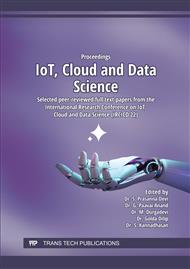p.111
p.125
p.137
p.147
p.156
p.162
p.170
p.180
p.187
Detect Anomalies on Metal Surface
Abstract:
Detection of surface imperfections in planar surfaces in the modern assembling process is a continuous area of examination. It has generally been difficult to ensure the outright faultlessness of surfaces of carbon and iron combinations, or any surface so far as that is concerned. Nature of appearance, or rather, the outer layer of modern items like metal sheets is being held at an especially elevated expectation particularly of late, to satisfy these guidelines and to guarantee that client necessities are met, we use PC vision based arrangements, these arrangements basically involve utilizing a 2D or 3D deformity recognition procedure like for example edge identification, these calculations joined with an AI model will recognize and distinguish absconds on the different planar surfaces. The model will be prepared with a dataset of pictures that will contain harmed as well as unharmed surfaces, this is to ensure that the model can distinguish a deformity and without any imperfection the model ought to perceive the surface as homogeneous. However long the model is prepared appropriately, these techniques have been demonstrated to be particularly vigorous, and as an answer they have been common of late and throughout the course of recent years. CNN and brain networks in view of CNN designs were utilized to prepare the model to group the imperfections.
Info:
Periodical:
Pages:
156-161
Citation:
Online since:
February 2023
Authors:
Price:
Сopyright:
© 2023 Trans Tech Publications Ltd. All Rights Reserved
Share:
Citation:


